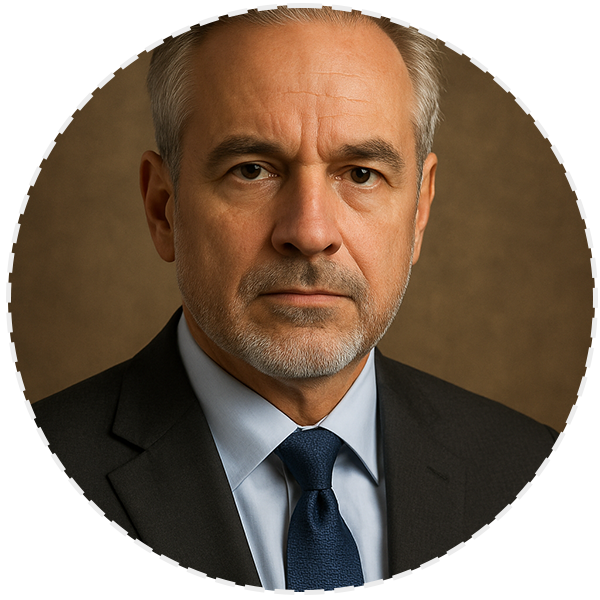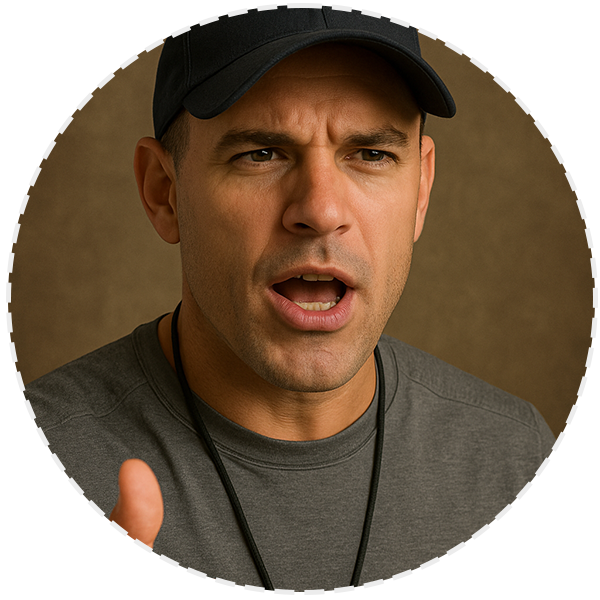Table of Contents |
As we continue our exploration of leadership, we move from understanding what leaders do to considering when and where certain actions are most effective. Our previous lesson focused on behavioral leadership theories, which examined the specific actions and styles leaders exhibit, such as being task-oriented or people-oriented. These studies helped us identify patterns in leadership conduct, suggesting that certain behaviors might generally lead to positive outcomes for a team or organization.
Let’s transition now to a related but different perspective: situational theories, often called contingency theories. While behavioral theories sought to uncover universal leadership traits or behaviors, situational theories propose that the most effective leadership approach depends heavily on the specific context or circumstances. You will find a key similarity between these two approaches in their shared goal: both aim to identify what makes a leader successful. For instance, both might acknowledge the importance of clear communication.
The main difference lies in their core assumption. Behavioral theories often imply a 'one best way' to lead, suggesting that if you adopt certain behaviors, you will be an effective leader regardless of the environment. Situational theories, however, argue that there is no single best style. A leader's effectiveness is contingent upon, or dependent on, various factors within the situation, such as the maturity of the followers, the nature of the task, or the organizational structure. This lesson will help you understand how to adapt your leadership style to fit different scenarios, making your leadership more flexible and responsive.
Again, behavioral leadership evolved from the trait-based leadership models of the early to mid-nineteenth century. The focus shifted from the characteristics that individuals possessed to the way that leaders behaved both inside and outside of their organizations. Simply put, focus shifted from who a leader is to what a leader does. Behavioral leadership theories suggest many behaviors are important, but do not identify a universal set of effective actions for leaders. The most successful leadership behaviors actually depend on an organization's specific type and culture, making a set of behaviors effective in one setting potentially ineffective in another. Situational or contingency theories demonstrate flexibility in their ability to adapt to new situations and contexts.
Another important critique of behavioral leadership is that it takes a considerable amount of time and effort (both on an individual and organizational level) to develop behaviors. This leadership model is essentially “trial under fire.” The only way to know if your behaviors are effective as a leader is to actually engage in leadership. It is very difficult to test behaviors in a controlled environment where the consequences are inconsequential. Engaging in the wrong behaviors can have real organizational consequences, and leaders who engage in incorrect behaviors may not get another opportunity (within that organization) to reimagine new behaviors that bring them (and the organization) success.
Building on our understanding that effective leadership depends on the situation, Daniel Goleman and his colleagues identified six distinct leadership styles that leaders can employ, adapting their approach to specific contexts. These styles offer practical ways for you to navigate diverse challenges and lead various teams effectively.
| Leadership Style | Description |
| Coaching Leaders | Help develop the skills of their followers |
| Pacesetting Leaders | Hold their followers to high standards through leadership by example |
| Democratic Leaders | Demonstrate communal leadership where decisions are made based on the needs of the group |
| Affiliative Leaders | Build up their followers with the primary focus on group morale |
| Authoritative Leaders | Analyze problems and identify challenges |
| Coercive Leaders | Tell their followers what to do |

Coaching Leaders help develop the skills of their followers, much like a seasoned mentor guiding a junior employee through a complex task to improve their specific abilities.
EXAMPLE
Sheryl Sandberg, the former Chief Operating Officer of Meta (Facebook), is widely recognized for her commitment to mentoring and developing talent, particularly women in the tech industry. She actively guided individuals to enhance their leadership and management capabilities, helping them navigate career challenges and build essential skills (Forbes, 2025).
Pacesetting leaders hold their followers to high standards through leadership by example; imagine a team lead who consistently delivers exceptional work and expects the same level of commitment and quality from their team members. A pacesetting leader motivates a team by modeling high standards and expecting excellent, rapid results. This leadership style, sometimes called leading from the front, means the leader demonstrates the desired behavior and performance level.
EXAMPLE
Jack Welch, the former CEO of General Electric, was a well-known pacesetting leader. He established ambitious goals for his teams and consistently pushed them to achieve those objectives. His approach involved actively participating in the work, demanding intense performance from every individual, and demonstrating the commitment and effort he expected from others. This leadership style can inspire a team to meet challenging targets and deliver quickly, as the leader sets a clear example of what is required (AIHR, n.d.).
Democratic leaders demonstrate communal leadership where decisions are made based on the needs of the group, such as a manager who facilitates a team discussion to arrive at a consensus on a new work process or project timeline. Democratic leaders excel in communal leadership, where group needs guide decisions, ensuring everyone's voice is valued. This approach aligns with Situational and Contingency studies, which emphasize that effective leadership adapts to the specific circumstances and the readiness of the followers. Rather than a "one-size-fits-all" style, democratic leaders involve their teams in problem-solving and decision-making processes.
EXAMPLE
Tim Cook, Apple's CEO, demonstrates this style. Unlike his predecessor, he encourages consensus among his senior managers and promotes broader participation and delegation across departments. This fosters a sense of ownership and commitment among team members, as their input is genuinely considered, contributing to more robust and well-accepted outcomes within the organizational context.
Affiliative leaders build up their followers with the primary focus on group morale, perhaps by organizing a team celebration after a challenging project to strengthen bonds and appreciation among colleagues. Affiliative leaders prioritize building strong emotional bonds and harmony within their teams, focusing primarily on group morale. This leadership style aims to create a supportive and inclusive environment where individuals feel valued and connected. You will find that these leaders often emphasize praise and positive feedback, fostering a sense of belonging and trust among team members.
EXAMPLE
Howard Schultz, the former CEO of Starbucks, provides a clear example of an affiliative leader. He cultivated Starbucks's reputation not only for its coffee but also for its commitment to employee well-being. Schultz prioritized creating a strong sense of community and connection among his staff, ensuring they felt supported and appreciated. This approach builds loyalty and a positive work atmosphere, which can lead to increased collaboration and a more resilient team.
Authoritative leaders analyze problems and identify challenges, effectively setting a clear vision and mobilizing people toward it, like a CEO who articulates a new strategic direction for the company after careful market analysis. Authoritative leaders carefully analyze problems and pinpoint challenges, then effectively articulate a clear vision, mobilizing people toward it. This leadership style focuses on setting the direction, making it clear "where we are going," while granting teams the autonomy to determine "how to get there."
The leader provides the overarching goal, trusting individuals to find the best path to achieve it.
EXAMPLE
Satya Nadella, the CEO of Microsoft, exemplifies this approach. He presented a compelling vision for a cloud-first, mobile-first world, along with fostering a growth mindset within the company. Nadella then empowered his teams to innovate and develop solutions within this framework, significantly transforming Microsoft's culture. This method aligns employees around a shared purpose while encouraging initiative and creativity in reaching objectives (Ian, 2025).
Coercive leaders tell their followers what to do, a style often seen in crisis situations where rapid compliance is essential, such as a fire chief issuing immediate instructions during an emergency. The coercive leader dictates tasks and expects immediate, unquestioning compliance. This leader tells their followers exactly what to do, often relying on authority to ensure directions are followed without discussion.
Coercive leadership is not always negative; its effectiveness depends on the situation, which aligns with the principles of contingency leadership. Contingency leadership suggests that the most effective leadership style is not fixed but changes based on the specific circumstances, such as the nature of the task, the team's capabilities, and the organizational environment. In times of crisis, for instance, a coercive approach can be essential. When immediate and decisive action is critical, and there is no time for discussion or consensus, a leader who provides clear, direct orders can guide a team through a difficult situation. Think of an emergency where quick decisions are needed to prevent further harm; a coercive style might save lives.
EXAMPLE
Elon Musk's management of Twitter, now X, at times demonstrated traits of a coercive leader by issuing ultimatums or requiring extreme work hours, telling employees precisely what to do to meet rapid, high-pressure demands. While such an approach can be polarizing, it can also drive intense, focused effort, particularly when an organization faces significant challenges or needs to execute a swift turnaround. The key is to understand that while coercive leadership can be effective in specific, high-stakes scenarios, its long-term use may negatively impact morale and innovation, as Goleman's research suggests (Cabral, 2022).Daniel Goleman’s work on leadership styles provides a powerful framework for understanding how emotional intelligence influences a leader's effectiveness. We can view these styles as tools in a leader's toolbox, to be used judiciously depending on the situation, and like all tools, each one has a use, but can also cause harm, depending on the context or situation.
Both behavioral and situational approaches share fundamental goals and insights. Both aim to understand what makes a leader effective, seeking to identify the qualities or actions that lead to successful outcomes for an organization or team. They both recognize the importance of a leader's actions; whether those actions are universal or context-dependent, the leader's behavior is seen as central to their impact. Crucially, both perspectives acknowledge that leaders influence their followers, guiding their efforts, and play a vital role in the achievement of organizational goals, such as meeting sales targets or completing a complex project. They agree that leadership is an active process, not just a passive role.
However, the main distinction between these theories lies in their central assumption about what constitutes the "best" way to lead. Behavioral theories, which we explored earlier, sought universal behaviors, suggesting a general best way to lead that would be effective across most situations. For example, some behavioral theories might have proposed that always being highly people-oriented, caring deeply for employee well-being, would consistently yield the best results regardless of the team's experience level or task urgency. Situational theories, by contrast, argue that the ideal leadership style varies greatly depending on the specific context, emphasizing adaptability as the key to effectiveness. These theories recognize that what works well in one setting, perhaps a highly structured environment with new employees, might be ineffective in another, such as a creative team of experienced professionals who need more autonomy.
In practical application, effective leaders often draw from both perspectives, understanding various leadership behaviors and knowing when to apply them based on the specific situation and the needs of their team. It doesn’t have to be one or the other, but it can leaders can draw insight and inspiration from both. This blended approach acknowledges that while certain behaviors are fundamental, their utility is optimized by tailoring them to the circumstances. For instance, a leader might use a more Democratic style when seeking team input on a new policy, allowing team members to contribute their ideas and build consensus. However, that same leader might switch to a more Pacesetting style when a critical deadline looms and direct execution is key, demonstrating high standards through their own work and expecting immediate action from the team. This ability to assess the environment and fluidly adjust one's leadership style is a hallmark of truly effective and adaptive leadership.
REFERENCES